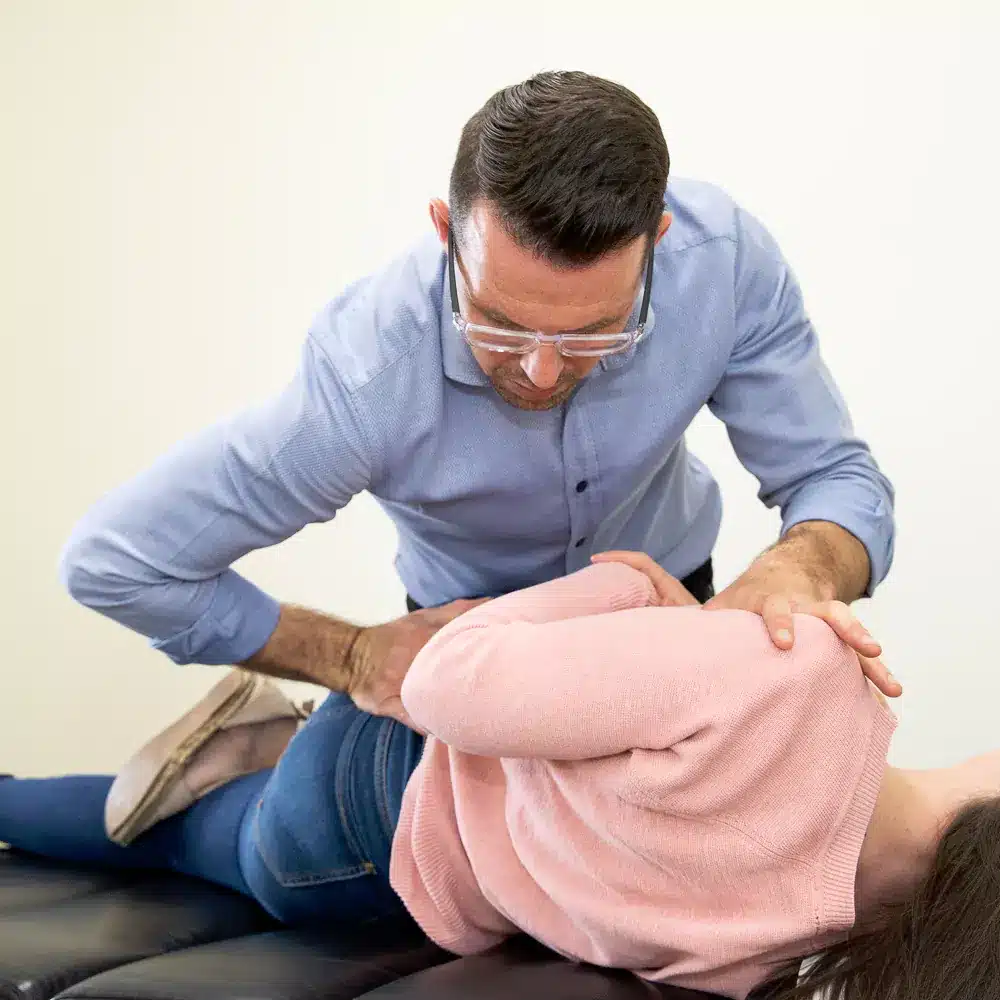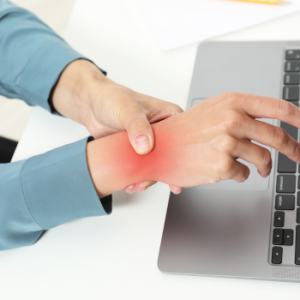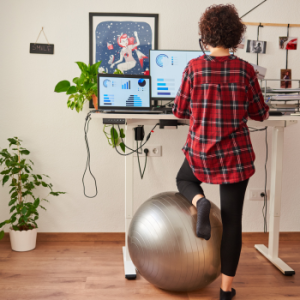Low back pain is one of the most common reasons why people visit a Chiropractic office. The 3 most common causes of low back pain based on probability prior to a thorough Chiropractic evaluation and history is:
- Disc – 40%
- Facet Joint – 31%
- Sacroiliac joint – 22%
During the history taking process and chiropractic examination, we can correlate the information obtained with multiple orthopaedic tests, which stacks the probability towards a definitive diagnosis. A correct diagnosis means more effective treatment and ultimately, a faster recover time. Now lets take a deeper dive into each.
Disc pain is much more common in patients under 50 years of age. This is because the fluid filled nucleus of the disc is better hydrated under the age of 50.
Common features of disc pain include:
- Central mid line pain along the spine.
- Pain with prolonged sitting
- Pain when moving from sitting to standing.
- Pain relieved by movement
- Usually painful with forward bending
- Often associated with neural tension (nerve pain) referring pain into one leg (sometimes both).
- Possible muscle weakness, tingling and pins/needles
It is important to mention that not every disc injury is a bulging or protruding disc. You can also strain the annulus fibrosis of the disc and this is very common. The annulus fibrosis is a section of the disc consisting of approximately 15-20 layers of fibrocartilage in ring formation (like an onion), which encases the water filled nucleus. A concentric or radial fissure can occur in the annulus which essentially is a small tear.
At Northern Inland Chiropractic we used specific neurological and orthopaedic testing to properly diagnose the source of your disc pain down to the level affected. In some cases further diagnostic imaging may be utilized but rest assured this is a common problem we see every day and have great success with gentle manual treatment.
Facet joint pain, unlike a disc is much more common in patients over 50. The pain is more lateral (to the side of the spine) and aggravated by back extension (leaning backwards) and twisting movements. The pain is usually described as a flank pain under the larger quadratus lumborum trunk muscles.
It is typically not painful to sit or move from sitting to standing positions. Facet joint pain typically does not have pain that refers into the leg. Also due to the nerve supply of the facet joint, it is usually very tender to touch over the involved skin and vertebrae. These features in conjunction with orthopaedic testing stack the probability to a very definite diagnosis and facet joint lesions respond very well to spinal manipulative therapy.
Lastly the sacroiliac joint – This is the joint in which the pelvic bone articulates to the sacrum. We have two sacro-iliac joints. They are large fibrous joints and they essentially control our hip height and leg length. The shape of the joint surface and synchronised muscle contraction allow for load transfer from the legs to the skeleton when walking.
When the sacro-iliac joint is the primary cause of your low back pain the follow symptoms routinely show up:
- Pain is always below the level of the L5 vertebrae. Pain above L5 in the lumbar region tends to rule our primary sacroiliac joint pain and leads us back to disc of facet joint involvement.
- The pain is unilateral.
- Pain is pin point and specific enough that the patient can usually place one finger on the involved joint with repeated testing (Fortin Finger Test)
- Sacroiliac joint pain is aggravated by static standing, moving from sitting to standing, twisting out of vehicles and walking for a brief time after being seated.
When diagnosing sacro-iliac joint pain we first rule out disc and facet joint as a possibility and use a cluster of testing to ensure a definitive diagnosis. The sacroiliac joints respond well to manual adjustments (Diversified and Gonstead techniques) and with Thompson Drop Techniques. Please check out the services section on our website for more info on these.
Although there are other causes of low back pain these 3 make up the VAST majority of cases. After reading through this and you identify similar traits in your low back pain please call the practice to make a booking. We would love the opportunity to be of service and have most likely cared for your condition many times over.
REFERENCES & ABSTRACTS
- Donelson R, Aprill C, Medcalf R, Grant W. A prospective study of centralization of lumbar and referred pain. A predictor of symptomatic discs and annular competence. Spine. 1997;22(10):1115–1122
- Young S, Aprill C, Laslett M. Correlation of clinical examination characteristics with three sources of chronic low back pain. The Spine Journal, 2003;3(6):460–465
- Laslett, M., McDonald, B., Aprill, C. N., Tropp, H., & Oberg, B. (2006). Clinical predictors of screening lumbar zygapophyseal joint blocks: development of clinical prediction rules. The Spine Journal, 6(4), 370–379. doi:10.1016/j.spinee.2006.01.004
- DePalma, M. J. (2015). Diagnostic Nihilism Toward Low Back Pain: What Once Was Accepted, Should No Longer Be. Pain Medicine (Malden, Mass), 16(8), 1453–1454. http://doi.org/10.1111/pme.12850
- Schwarzer AC, Aprill CN, Derby R, et al. Clinical features of patients with pain stemming from the lumbar zygapophysial joints. Is the lumbar facet syndrome a clinical entity? Spine. 1994;19(10):1132–1137
- Schmid, A.B. & Coppieters, M.W. The double crush syndrome revisited – A Delphi study to reveal current expert views on mechanisms underlying dual nerve disorders. Manual Ther 16, 557–562 (2011).
- Fortin, J. D., & Falco, F. J. (1997). The Fortin finger test: an indicator of sacroiliac pain. American Journal of Orthopedics (Belle Mead, N.J.), 26(7), 477–480
- Majlesi, J., Togay, H., Unalan, H., & Toprak, S. (2008). The sensitivity and specificity of the Slump and the Straight Leg Raising tests in patients with lumbar disc herniation. Journal of Clinical Rheumatology, 14(2), 87–91. doi:10.1097/RHU.0b013e31816b2f99
- McKenzie RA. The lumbar spine: Mechanical diagnosis and therapy. Waikanae, New Zealand: Spinal Publications, 1981
- DePalma, M. J., Ketchum, J. M., & Saullo, T. (2011). What is the source of chronic low back pain and does age play a role? Pain Medicine (Malden, Mass), 12(2), 224–233. http://doi.org/10.1111/j.1526-4637.2010.01045.x
- Laupacis, A., Sekar, N., & Stiell, I. G. (1997). Clinical prediction rules. A review and suggested modifications of methodological standards. JAMA, 277(6), 488–494





